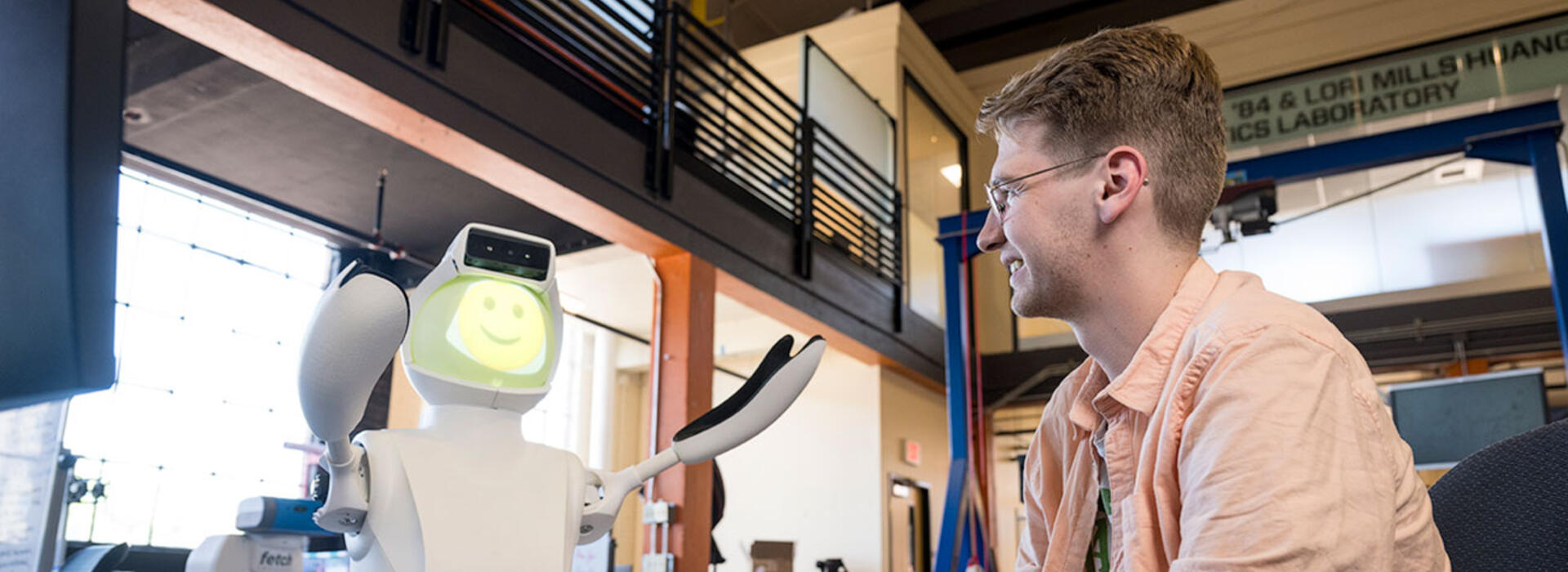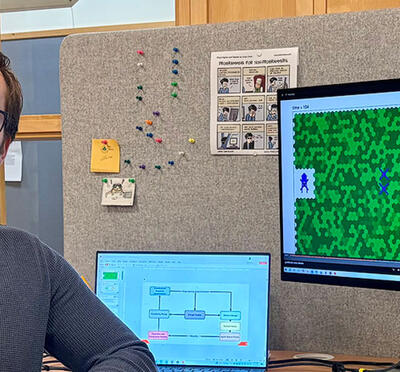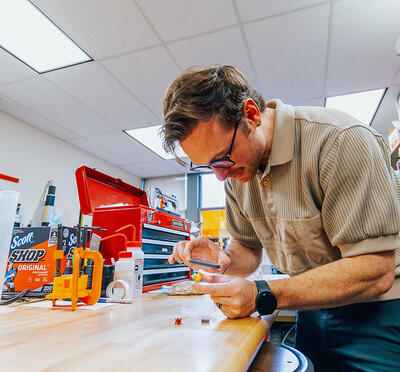Humans give each other subtle cues when communicating — we look at each other to show we are paying attention, tilt our heads when we are curious, or stand close to indicate we want to interrupt a conversation.
As robots start working in care facilities, homes, and factories, they could be more accepted and efficient if they are programmed to exhibit and interpret human cues.
“It's an open question of how much understanding of social interactions we need to program into robots so that we are comfortable interacting with them,” said Bill Smart, professor of robotics at Oregon State University.
Example research questions are: If a robot makes eye contact while handing an object to a human, will the human be less likely to drop it? Where should a robot position itself when interacting with a human to make the human feel comfortable? What facial gestures show that the robot is following what the human is saying?
Building a social robot
Smart is leading a $5 million project, funded by the National Science Foundation, to develop a new version of the humanoid robot, Quori, which researchers can use to test questions about human-robot interactions. The robots are designed and built by a collaborative team that includes researchers at the University of Pennsylvania’s GRASP Laboratory, Los Angeles-based software company Semio, and Santa Clara-based hardware development company OLogic.
The team is collaborating with former Pixar animator Doug Dooley to develop expressive motions for the body and head, as well as animations for the LCD screen that serves as the robot’s face. Quori’s omnidirectional wheeled system allows for more possibilities of humanlike movements, such as traveling sideways. Quori 2.0’s design team, managed by Ross Mead of Semio, won the Innovative Solutions award at the Robot Design Competition at the International Conference on Social Robotics in Odense, Denmark, in October 2024. The first prototype debuted at the Human-Robot Interaction conference in Melbourne, Australia, in March.
The team expects to release 50 units to researchers across the country starting in March 2026. Smart says he expects to have no problems selling the first 50, based on the level of interest so far.
Building a research community
The project includes more than designing and building robots. The bigger idea behind the project is to foster a community of researchers who learn from each other to speed up the process of discovery and innovation. The community also contributes to the design of the robot. The group meets regularly online and had its first in-person meeting in Madison, Wisconsin, in the spring.
“This is a great example of federally funded science catalyzing a community of researchers across the nation and paving the way to deploy U.S.-made robots for research, and potentially leading to commercialization opportunities,” Smart said. “It couldn’t be done without that support.”





